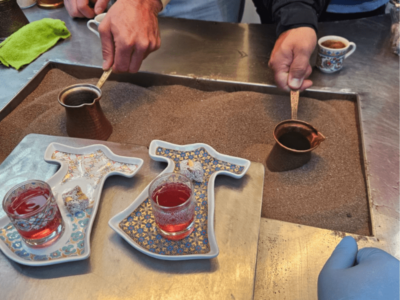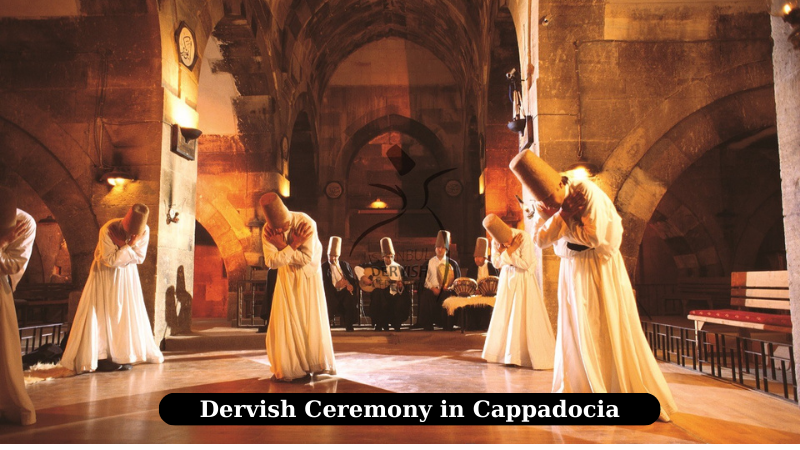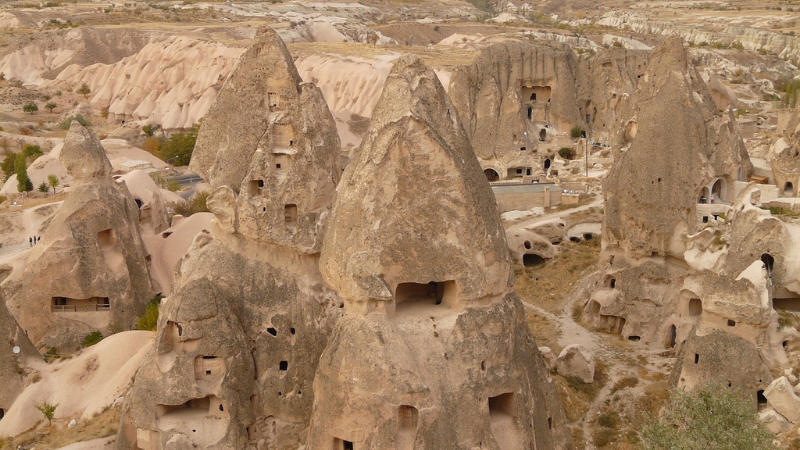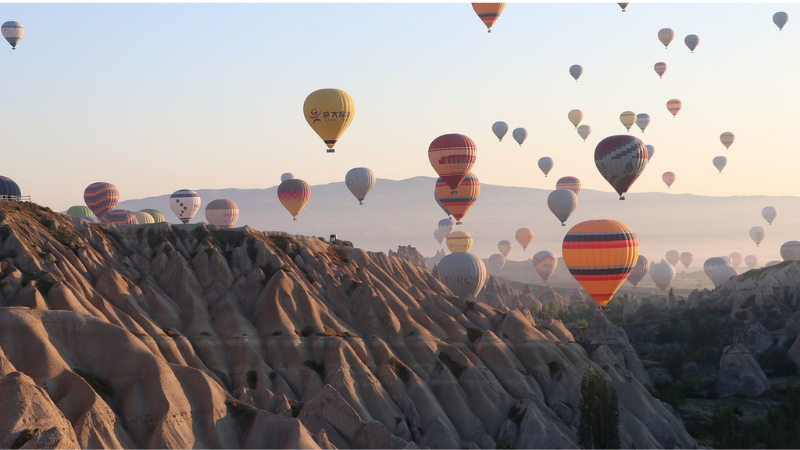


Thanks to volcanoes, Cappadocia got its current appearance. Lava, ash, rain, wind and ice are the “artists” who have sculpted Cappadocia, in Central Turkey, over millions of years
Also known for its many “fairy chimneys”, as these sparks are often called, Cappadocia is one of the most popular and unique tourist centers of Turkey, it is home to millions of locals and tourists every year with its wonderful nature, unique valleys its fairy chimneys, open-air rock-hewn settlements, museums and underground cities, welcomes foreign tourists.
Land of beautiful horses is a loose translation of the Persian term that gave its name to the region of Cappadocia in present-day Turkey.
In the past, this region stretched from the Taurus Mountains in the south to the Black Sea in the north. After the Persian invasions during the sixth century, the entire area was divided into two regions, Pontic and Rocky Cappadocia.
Thanks to volcanoes, Kapadokya (Cappadocia) got its current appearance. Also known for its many “fairy chimneys”, this region is unique in that part of the world. Since 1985, Göreme National Park has been part of UNESCO’s World Cultural Heritage, Telegrafi reports.

But what’s most unique about these fairy chimneys is that they come in all kinds of different shapes and sizes. You would expect them to look like an ordinary rock pillar, but they are much more than that.
For example, in Devrent Valley, also called the Valley of Imagination, you’ll find fairy chimneys that resemble some of the most random things. Some may require a bit of imagination to see, hence the name, but the camel rock at the entrance is unmistakable.
In the Valley of the Monks (Pasabağu Valley), travelers will find double and even triple fairy chimneys with mushroom caps where people once lived. No two fairy chimneys in Cappadocia are exactly alike.
The best way to see the magic of Cappadocia’s landscape is a hot air balloon ride in its incomparable skies. The colorful balloons depart around five in the morning, usually from the village of Göreme, and visitors can enjoy sweeping views of Pigeon Valley, Earth Valley, Love Valley, and Pasabağ Monks Valley, along with the famous fairy chimneys and formations of other fantastic rocks. For guests seeking an authentic Cappadocian experience, the area’s cave hotels are the perfect accommodation.

Kapadokya includes the provinces of Aksaray, Nevşehir, Niğde, Kayseri and Kırşehir. For most people, the name Cappadocia suggests the cities of Uçhisar, Göreme, Avanos, Ürgüp, Derinkuyu, Kaymaklı and Ihlara, where the land has been formed into fantastic shapes over millions of years.
Since the region was extremely important in the development and spread of Christianity, you can still see churches carved into the rock, the interior of which is particularly amazing. Both because of the spaces, as well as because of the frescoes which are still preserved.
The Dark Church and the chapel stand out. It is easily recognized by the decoration of the Lapis lazuli stone. The dark church was built at the end of the 11th century and in the first years of the following, and the history of its name is particularly interesting. Since the light in this unusual Christian sanctuary reaches only through a small window, which is located in the thin, the church got its name.

However, it was precisely this characteristic of this building that contributed to the preservation of its interior. Many frescoes, depicting various biblical scenes, can still be seen today in this holy place, carved in stone.
With unique natural features that display a harmonious combination of natural and cultural landscape elements, Kapadokya is a fascinating open-air museum and an unparalleled example of humanity’s shared cultural heritage.
Rich ancient heritage
Although a hot air balloon flight over Cappadocia is undoubtedly a tourist attraction that has made this region of present-day Turkey famous, there is no doubt that the entire area has numerous attractions that deserve attention.
One of them is the village of Mustafapaşa, called Sinasos in ancient times. About six kilometers from the largest populated place, there is the village of Ürgüp, where Greek Christians and Muslims have lived together for centuries.
In addition to the well-preserved stone mansion and the Şakir Paşa Madrasa, this village is also known for its Christian church, built in the last years of the 19th century. The church dedicated to Emperor Constantine and Empress Helena is considered one of the most impressive buildings.
Near the village of Mustafapaşa, you can also see the valley of Gomeda, which is known for its cult objects, houses and other buildings of the past.
Fascinating underground cities
The underground cities of Kaymaklı, Derinkuyu, Özkonak, Mazi and Tatlarin, created to protect the area’s population from invaders, open a window into the daily lives of their inhabitants, with rock-cut tunnels connecting dozens of living, worshiping and storage.
Walking along the paths of these unique underground dwellings is an unforgettable experience.
Fantastic taste
And after walking around, you will certainly get hungry. So don’t leave Kapadokya without tasting pot kebab, çomlek, rose pie, wedding soup and traditional hasude of the area.
Visitors to Cappadocia start the day with a traditional Turkish breakfast, usually accompanied by a wonderful view of the landscape of fairy chimneys. This hearty breakfast features local cheeses and fresh eggs, tomatoes, cucumbers and green peppers, along with olives, jam, honey, butter and cream. Delicacies such as homemade sausages, pastries and the delicious egg dish, menemen, are complemented by aromatic Turkish tea. A perfect start to a busy day of fun and sightseeing!
Other dining delights are local dishes such as apricot stew and saffron rice (a saffron-rice dish). In a region famous for its pottery, the kebab test (pottery kebab) is a must: vegetables and meat are placed in a clay pot covered with bread and baked in a traditional oven. The climate of Cappadocia is ideal for growing grapes and the area has a long tradition of wine production. At the various wineries in the area, guests can sample local beverages made from grapes grown in the region’s tuff-rich soil.
Source